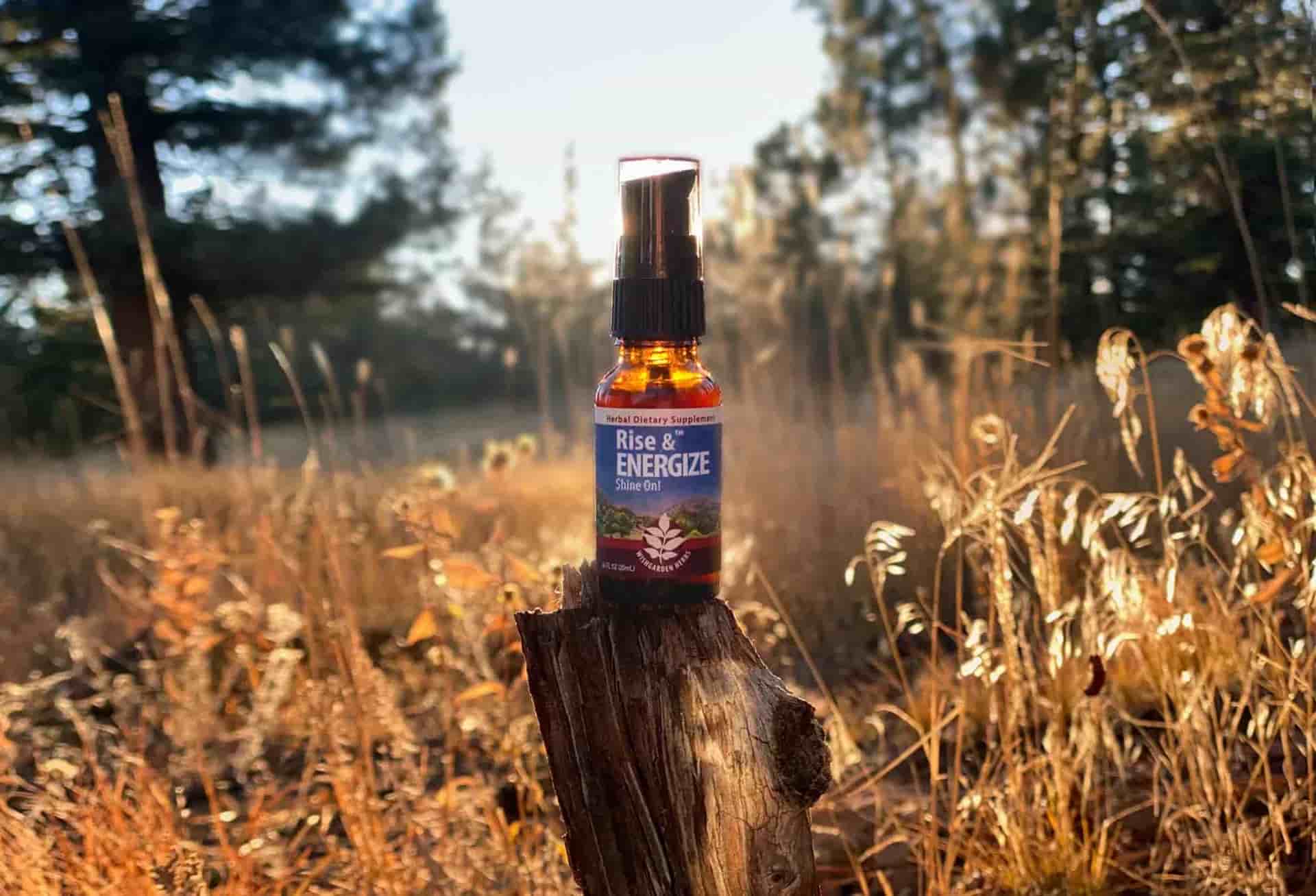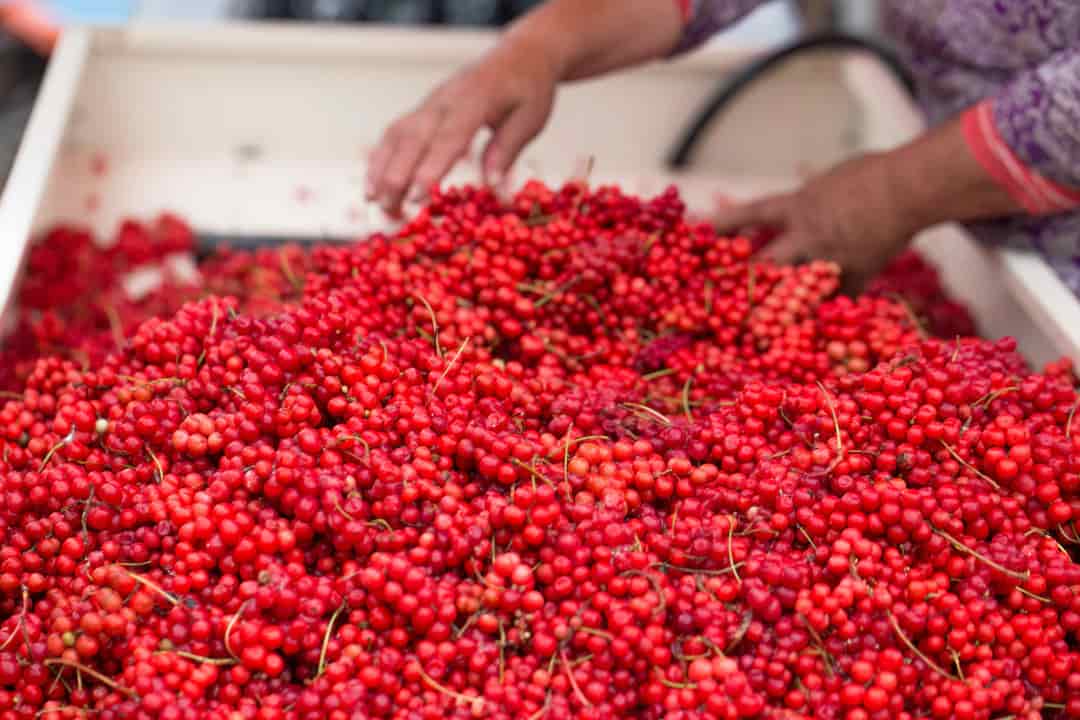Many plants have centuries-long relationships with humanity, offering sustenance, fortitude, delight, and medicine. Schisandra spp., a member of the Schisandraceae (Magnolia vine) family is one such plant. There are more than 19 species of Schisandra, all deciduous climbing vines, found growing up to 23 to 29 feet, in their native homes in cool mountainsides of Northern China, Korea, Japan, and the Far East of Russia. There is one rare species, Schisandra coccinea, found growing in southern Appalachian streambeds in America.
Botanical Description of Schisandra
Schisandra chinensis; Schisandra sphenanthera; Schisandraceae (Magnolia vine) family

Parts Used: Fruit (berries)
Phytochemicals: Lignans (more than 40 have been studied from this fruit); phytosterols; organic acids; pectin; volatile oil; and vitamins A, C, and E
Taste: Over the centuries, this fruiting vine of supple berries has been fondly referred to by the experience of what happens when you taste it. In fact, both the Chinese name "Wǔ Wèi Zi" and the Korean name "Omija" translate to "five-flavor berry." The simultaneous sensations of tart, spicy, sweet, salty, and bitter are unique unto Schisandra. I highly recommend tasting a Schisandra berry! I periodically test my taste buds to see which flavor is more prominent. For fun, do so with others; not only will you be cultivating a rich experience for any foodie friends in your life, you'll also be providing your body with deep nourishment.
Contraindications: Schisandra berries have been identified as generally safe for tonic use and have low toxicity. However, they can increase the effects of barbiturates, thus, contraindicated for anyone who is on phenobarbital or barbital. Due to potential stimulation of uterine contractions, they are not recommended for women during pregnancy; no safety concerns have been reported for nursing women.
Harvest: Autumn
Grow: In USDA zones 4 through 7, sow seeds ¼-inch deep directly into prepared seedbeds beneath a wall, fence, arbor or trellis in the fall (or indoors in March). Make sure to plant both female and male plants, as both are needed to produce the berries!
Plant Walk with Schisandra
Back in July, you may recall the delightful journey to Avena Botanicals on the rocky coast of Maine, where we went on a plant walk to meet Eleuthero with joy-hearted herbalist, gardener, teacher, and author Deb Soule. Today, let's go back to her magical garden to meet our new adaptogen friend, Schisandra. In this short video, we'll learn some tips for growing and working with Schisandra for resiliency.
Schisandra: Nourish & Calm
Our connection to Schisandra is owed and imparted through villagers who tend and harvest this sacred plant. Their embodied wisdom has long told of its ability to "calm the heart and quiet the spirit." If we think of calming the heart and quieting the spirit in terms of the reciprocal relationship between the central nervous system (CNS), the endocrine signals, and the liver (where hormones from this relationship are processed), we begin to see how this fruit is food for emotional processing and behavior. Schisandra assists our liver's ability to regenerate itself and, in doing so, helps us process our experiences of life.

Dried Schisandra Berries
Modern science is just starting to understand what that means, as researchers are busy detailing the activity of Schisandra's lignans. Lignans are naturally occurring phenols in plants that act as bioactive compounds with various pharmacological properties. Their studies have confirmed that Schisandra is a true adaptogen, helping the body adapt to stress. In addition, they've shown it mildly stimulates the central nervous system, enhances mental and physical performance, and relieves mood imbalances and promotes a feeling of calm.
That is not all; Schisandra is showing promising potential as a neuroprotective, meaning it protects the central nervous system against neuronal cell damage. It does this by supporting healthy inflammation responses, reducing oxidative stress, increasing glutathione, and inhibiting the progressive loss of neurons. What does that mean in a world where more neurodegenerative diseases are commonplace? It means conceivable memory repair, cognitive enhancement, and potential for help for those who are struggling with CNS deterioration.
Schisandra: Resiliency in Action
As westerners catch up with the wisdom of indigenous stewards, we have the opportunity and responsibility to support these communities in economic sovereignty, benefits, and regeneration of their environment.
Schisandra's role of being a nourishing fruit providing resiliency in the human body is also reflected in its native landscape. In the Upper Yangtze of China, it grows in the crucial habitat for the endangered Giant Panda. And in the Ussurisky taiga of Russia, it grows in the protected region of the Amur (Siberian) Tigers. Conservation-focused non-governmental organizations (NGOs) are working with villagers to implement sustainable harvesting methods that protect their landscapes (flora and fauna) while ensuring that they are able to sell their products for higher prices.

Farmers at the Schisandra farm in China where we source Schisandra for our formulas.

The Schisandra farm in China.
Here at WishGarden, we recently expanded our formulas to include Schisandra, which can be found in our Rise & Energize and Hot Flash Tamer Daily Regulator formulas and our Schisandra single. We did so by partnering with these keepers of ancient botanical knowledge, so that we too can assist in ensuring resiliency for plants and people.
Want to get involved? Check out any of these NGO projects: FairWild Foundation; Wildlife Conservation Society (WCS); TRAFFIC
References
- Johnson, K. (2017, April 26). How A wild berry is helping to protect China's giant pandas and its countryside. NPR.
- Zhang M, Xu L, Yang H. Schisandra chinensis Fructus and Its Active Ingredients as Promising Resources for the Treatment of Neurological Diseases. Int J Mol Sci. 2018 Jul 6;19(7):1970. doi: 10.3390/ijms19071970. PMID: 29986408; PMCID: PMC6073455.
- Sowndhararajan K, Deepa P, Kim M, Park SJ, Kim S. An overview of neuroprotective and cognitive enhancement properties of lignans from Schisandra chinensis. Biomed Pharmacother. 2018 Jan;97:958-968. doi: 10.1016/j.biopha.2017.10.145. Epub 2017 Nov 7. PMID: 29136774.
- Tea, R. (2020, November 19). Schisandra berry a traditional adaptogen with a modern twist. Rishi Tea & Botanicals.
Dawn Amber Miller has apprenticed and studied across the United States of America and has received certificates in traditional and medical herbalism from the Appalachia School of Holistic Herbalism, the Commonwealth Center for Holistic Herbalism, and the Hawthorn Institute. She is a passionate steward of the sacred realm of Nature and moves with the wildflowers, tending the rituals of wildcrafting heart and hand. Currently she is a customer journey representative and researcher at WishGarden Herbs.
For educational purposes only. This information has not been evaluated by the Food and Drug Administration. This information is not intended to diagnose, treat, cure, or prevent any disease, or sell any product.
Recommended Products
Further Reading












